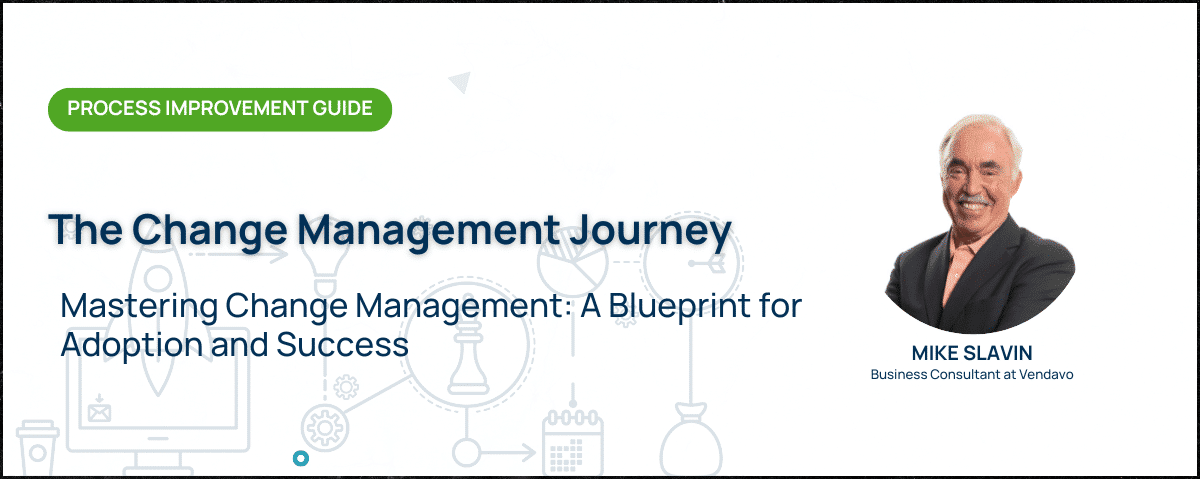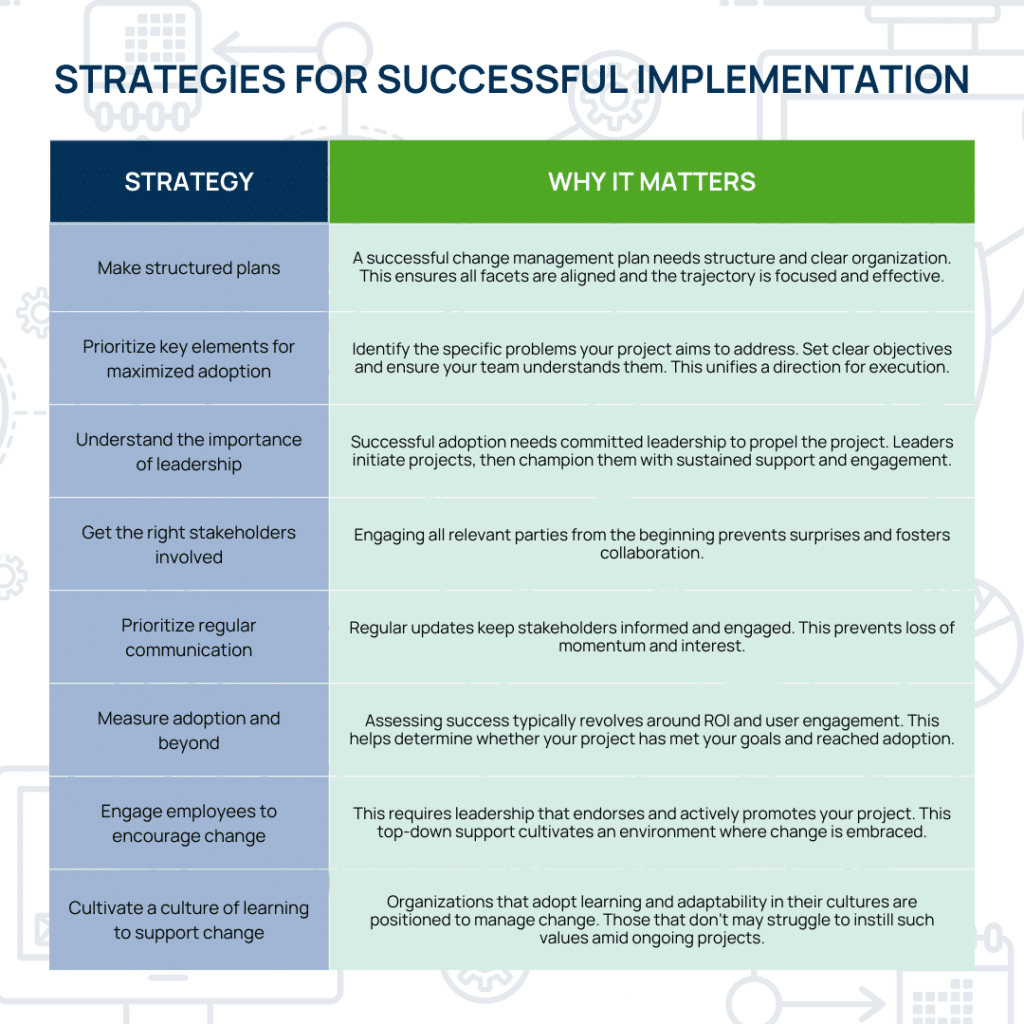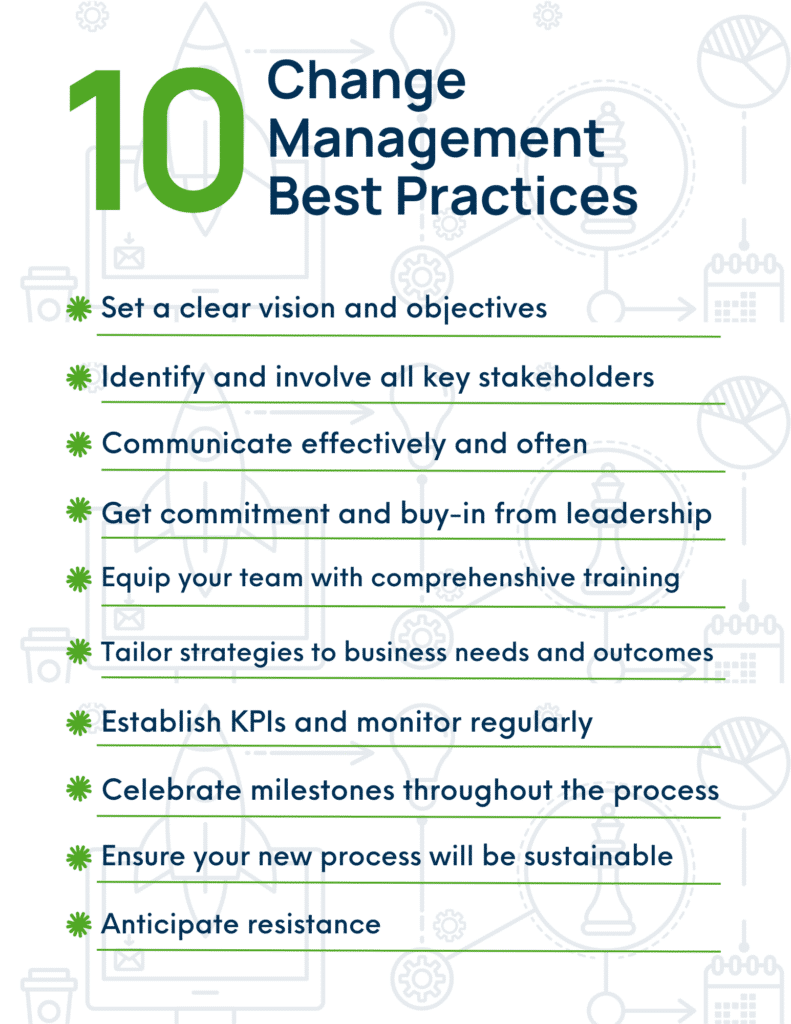
Being able to adapt through effective change management is crucial for lasting success. Mastering this process means you’ll turn disruption into a strategic advantage for your organization. In this article, Mike Slavin, Business Consultant at Vendavo, explores the elements of a successful change management strategy and how structured planning and execution enhance project outcomes and maximize adoption across organizations.
The only constant in modern business is change. But while change is inevitable, successful adaptation is not.
Every shift in strategy, new technology implementation, and cultural realignment hinges on effective change management. Without it, even the most promising initiatives can falter.
It’s not just a business buzzword, but a vital strategy for thriving in a tumultuous market. Let’s explore proven strategies, common pitfalls, and how structured change management turns challenges into opportunities for growth and innovation.
Strategies for Successful Implementation and Adoption
Change doesn’t happen when you decide. After you decide, you have to implement and adopt those changes in a way that ensures lasting success. The right strategy coupled with strong execution makes all the difference.
Here’s how a carefully designed approach can turn the daunting process of organizational change into a smooth, manageable transition that aligns with your strategic business goals.

- Make structured plans
A successful change management plan needs structure and clear organization. This ensures all facets are aligned and that the trajectory is focused and effective.
- Prioritize key elements for maximized adoption
Identify the specific problems your project aims to address. Set clear objectives and ensure your team understands them. This unifies a direction for execution.
- Understand the importance of leadership
Successful adoption needs committed leadership to propel the project. Leaders initiate projects, then champion them with sustained support and engagement.
- Get the right stakeholders involved
Ensure you’ve got the right mix of stakeholders from the outset. Engaging all relevant parties from the beginning prevents surprises and fosters collaboration.
- Prioritize regular communication
Regular updates, whether through newsletters or team meetings, keep stakeholders informed and engaged. This prevents loss of momentum and interest.
- Measure adoption and beyond
Assessing success typically revolves around ROI and user engagement. This helps determine whether your project has met your goals and reached adoption.
- Engage employees to encourage change
This requires leadership that endorses and actively promotes your project. This top-down support cultivates an environment where change is embraced.
- Cultivate a culture of learning to support change
Organizations that adopt learning and adaptability in their cultures are positioned to manage change. Those that don’t may struggle to instill such values amid ongoing projects.
The right strategies lay a strong foundation for effective change management. But recognizing potential roadblocks is equally critical. Even the best-laid plans can encounter unforeseen challenges that can derail the entire process if not properly managed.
Issues and Pitfalls in Change Management
When you’re embarking on a change management journey, several common issues can arise that hinder your initiatives’ success. These issues often stem from organizational, procedural, or interpersonal challenges.
Here’s what to watch out for:
- Resistance to change
This can occur due to fear of the unknown, discomfort with new processes, or a perceived threat to job security or established routines.
- Lack of effective communication
Insufficient or unclear communication can lead to misunderstandings about the reasons for change, the benefits it brings, and the specifics of the change process.
- Inadequate leadership support
Leadership must be actively involved and committed to the change, giving it the authority and momentum it needs to take root effectively across the organization.
- Poor planning
Ineffective change management often stems from inadequate planning, which includes failing to anticipate obstacles or not setting clear, achievable goals.
- Insufficient training and resources
Employees must be adequately prepared to handle new systems or processes, which involves comprehensive training and ongoing support.
- Lack of stakeholder engagement
Not involving key stakeholders in planning and implementation can lead to lack of buy-in and minimal input from those who know what the change will affect most.
- Ignoring company culture
If the change contradicts the established norms and values of the organization, it may face substantial resistance from employees.
- Failure to address change fatigue
Recognizing and managing the cumulative impact of constant change is crucial for maintaining team performance, morale, productivity, and enthusiasm.
Proactively addressing these issues can mitigate the risks associated with change management and enhance the likelihood of successful adoption.
10 Change Management Best Practices
Following best practices is crucial for ensuring that transitions within an organization are smooth, effective, and lead to lasting improvements. Here are some key strategies that can facilitate successful change management:

- Set a clear vision and objectives
- Identify and involve all key stakeholders
- Communicate effectively and often
- Get commitment and buy-in from leadership
- Equip your team with comprehensive training
- Tailor your strategies to unique business needs and outcomes
- Establish KPIs and monitor regularly
- Celebrate milestones throughout the process
- Ensure your new process will be sustainable
- Anticipate resistance
Implementing these best practices can help minimize disruptions and maximize the effectiveness of change initiatives, leading to improved outcomes and greater organizational resilience.
The Journey Toward Improvement
Change management is a continuous journey, not a one-time initiative. It requires ongoing commitment, strategic planning, and active involvement from all levels of an organization.
Adopting a structured approach to change management helps organizations navigate the complexities of modern business dynamics and position themselves for long-term success and resilience. This blueprint helps organizations implement successful change management strategies, anticipate change, and gain a competitive advantage.
Ready to take your organization’s growth and profitability to the next level? Reach out today to speak with a Vendavo expert about how our full suite of commercial excellence and revenue optimization solutions can help.